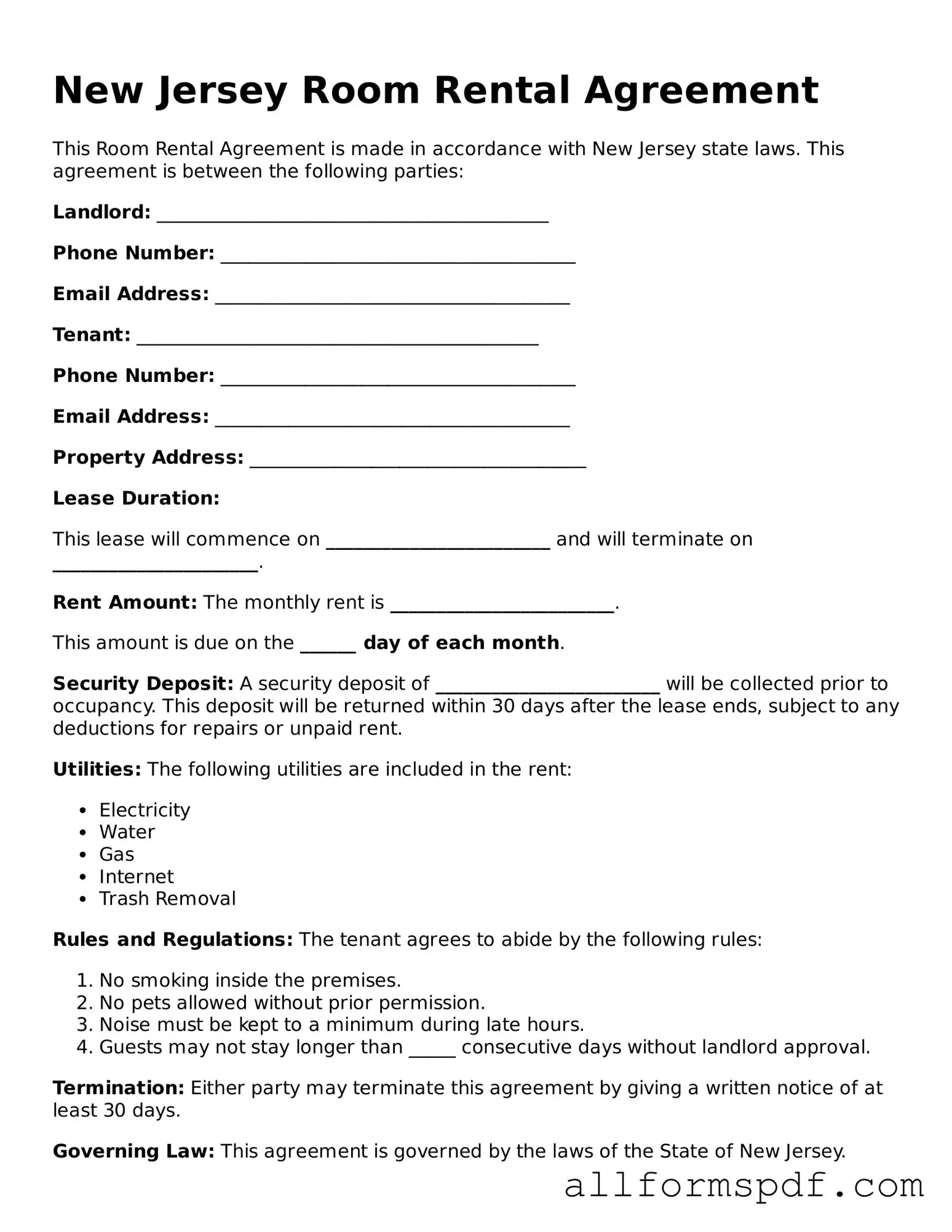New Jersey Room Rental Agreement - Usage Guidelines
Filling out the New Jersey Room Rental Agreement form is a straightforward process. This agreement outlines the terms between the landlord and tenant regarding the rental of a room. Ensure you have all necessary information ready before you begin.
- Start by entering the date at the top of the form.
- Fill in the landlord's name and contact information in the designated sections.
- Provide the tenant's name and contact information next.
- Specify the address of the rental property, including the room number if applicable.
- Indicate the rental term, such as month-to-month or a fixed term.
- List the monthly rent amount and specify the due date for payments.
- Include any security deposit amount required and the conditions for its return.
- Detail any utilities or services included in the rent.
- Sign and date the form at the bottom, ensuring both landlord and tenant do the same.
After completing the form, make copies for both parties. This ensures everyone has a record of the agreement. It’s important to keep communication open and address any questions that arise during the rental period.
